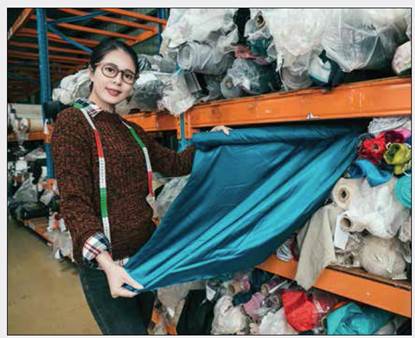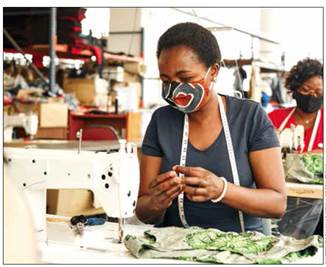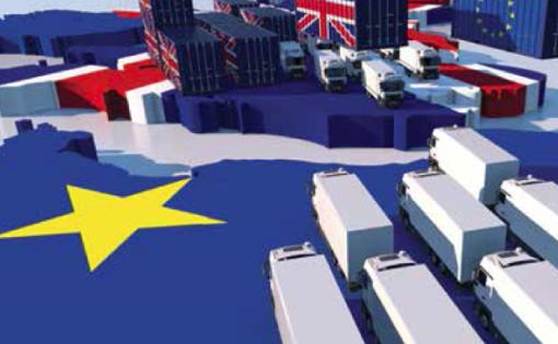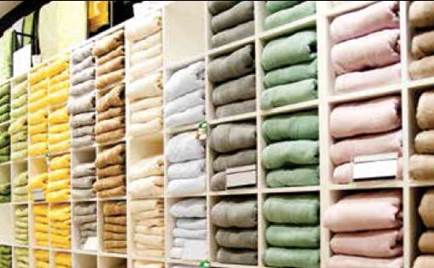Global supply chains are still reeling under the shock waves created by the scourge of COVID-19 pandemic. What started as a minor disruption in 2019-20 grew into a major sourcing hassle for organisations across the globe. The situation has necessitated companies, industries and multinational retail chains to reimagine and revamp their hitherto sourcing / supply chain models.
As a long-term tradition, businesses across the globe have focused on supply chain consolidation. This has led to suppliers being hardpressed more frequently than not to initiate prompt and apt actions. These initiatives meant that they inadvertently eliminated buffers and flexibility to withstand disruptions, such as the one caused by the COVID-19 outbreak. With vaccinations still under way in various parts of the world, the need of the hour is for businesses to add a dash of long-term supply chain resilience to their operations.
For decades together, adaptability and flexibility have been essential for the survival and sustenance of any industry. This could be predominantly attributed to the fact that various geographies tend to adapt at different rates in their efforts to overcome situations like the contagion aftermath, among various other issues. Furthermore, increased visibility into sophisticated supply chain activities is bound to help organisations reduce supplier exposure and risk. This, in turn, should help them remodel their supply chains.
The COVID-19 pandemic has laid bare the brittleness and discrepancies of long- SEPTEMBER 2021 FIBRE2FASHION | 33 distance, international supply chains. So, incorporating a layer of resilience will facilitate conglomerates to join hands with a much wider range of suppliers – right from global corporations to smaller, regional start-ups – in order to ensure business continuity.
Global Supply Chain & Covid-19
These are undeniably troubled times. The COVID-19 pandemic has upended the world order down to every single individual’s work. Global goods trade, however, has benefitted from the marginal recovery in retail sales and industrial production. A promising outlook emerges from world trade volumes despite supply chain volatility. Even as other sectors remain worse hit by lockdowns and unpredictability, it’s heartening to note that global trade’s recovery has outstripped global GDP growth. Reports reassure that the global trade volumes have rebounded after lockdowns at ports and the Suez Canal blockade.
All said and done, supply chain disruptions have accumulated and worsened after the novel Coronavirus spread. A smorgasbord of raw materials and sourcing inputs are demanding much longer delivery periods than normal and containers are becoming dearer. Each such hold-up is causing shortages of items, besides rendering price escalations to become more acute.

Even before the widespread eruption of the pandemic, 2019-20 piled a lot of issues on the global supply chain, thereby negatively affecting logistics fulfilment, and leaving the business operators a sullen lot. By March 2021, just 40 per cent of global cargo shipments reached their destinations on schedule. The recent situation was much worse than what it used to be last year.The global supply chain is an intricate web of multiple threads weaving in and out at a rapid pace. The entire flow of supply operations starts right from the sourcing of raw materials. Sourcing can be from one location or from various geographies and global destinations, depending entirely on the unique requirements of a manufacturer. The process is both protracted and labour-intensive, also with a need for enormous human intervention. Post sourcing, raw materials must be sorted, assembled, and put together into end products at processing facilities and plants. COVID-19 was just one major aspect that threw a spanner in the works of global supply chain networks. The pandemic has been raging worldwide, affecting the livelihoods of workers and operations of all businesses dependent on the supply chains. But there are much more issues saddling the sourcing scenario than meets the eye.
Tremors All over
The base cost of the raw materials and shipping charges have been skyrocketing owing to the supply chain disruption. For example, the cost of a single-container shipment from China to the United States (US) has shot up by an astronomical 228 per cent in one year. Ultimately, businesses across the world are struggling to cope with the twisting and turning supply chain demands, requirements and dynamics. Merchants are flocking the ports in order to replenish their goods and meet the increasing demands of their customers. The result? The mean transport schedule has more than doubled, from around 14 days in 2020 to 33 days now. The Ever Given container vessel blocking the major Suez Canal trade route that connects the Mediterranean with the Red Sea was another recent dampener. The obstruction’s impact is still being felt across several sectors that rely on the waterway for their trade. And then there are issues including the ongoing China-US trade war and some companies boycotting Chinese products after the COVID-19 spread was traced back to the region. The European Union (EU) is still coming to grips with Brexit. Businesses are re-evaluating their priorities and trade bases, shifting their erstwhile interests to a more convenient geography.
Impact On The Textile Sector
The international textile and apparel industry is no exception to all these problems afflicting other sectors. A survey by the International Textile Manufacturers Federation (ITMF) assessed the impact of COVID-19 on the global textile value chain. The global survey conducted among 600 companies in 2020 concluded that orders are plummeting by over 40 per cent. It also found out that organisations feared the worst: a 32 per cent dip in turnover. As far as South-East Asia is concerned, a 22 per cent fall was anticipated as against a 36 per cent plunge in the East Asian region.

The participant organisations had a valid reason to believe so last year. Every segment in the textile value chain, right from spinners to garment manufacturers and textile mills, has been beset by lack of orders. If we go by the ITMF survey, integrated producers are a less affected lot with a 26 per cent decline, even as the other segments estimated a 31 per cent to 34 per cent drop in turnover.
“After the pandemic outbreak, there have been a lot of issues afflicting the textile sector. Liquidity is a primary issue in the Indian context, which can’t be overcome without the support of government and other stakeholders. Garment manufacturers, distributors, suppliers and retailers are in need of soft loans and subsidies to brave and emerge stronger from these strong headwinds. India, in particular, holds out immense potential and has bright opportunities to come out with flying colours in this respect,” says Raja M Shanmugam, president of the Tiruppur Exporters’ Association (TEA) and founder and managing partner of Warsaw International, Tiruppur.
China has been at the forefront of textile sourcing over the past couple of decades. However, its trade war with the US, rising labour costs, acute manpower crisis, and not to forget, the pandemic, have ensured that China is no longer the favoured sourcing location for several sectors. “Shipping prices have gone up steeply over the recent past, as China is struggling to pacify all customer nations. India is slowly, but steadily becoming a supply hub to the international markets now. We, however, need to realise bigger volumes. Other neighbouring countries such as Pakistan, Bangladesh, Sri Lanka, Myanmar, Cambodia, and Indonesia are also coming up the supply chain. This should be viewed as an opportunity,” reckons Sanjay Kumar Jain, managing director, TT Textiles Limited, which covers the entire spectrum of the textile sector, including cotton, yarn, fabric, garments and accessories.

“We don’t have access to high-end materials, so we need time to build the internal market. India can and should develop as a textile sourcing hub, as we certainly have the potential to be as good as China. We can also be a global garments supply chain base for international as well as domestic players,” adds Jain. This situation has been brewing over the last two years. Quite a lot of international manufacturers have already decided to ratchet down their reliance on China when it concerns their supply chain. The final nail in the coffin is some companies deciding to boycott China and setting their shop elsewhere. Manoj Kedia, owner of MAA Textiles from Kolkata, however, has a different perspective. “COVID-19 has not had much impact on sourcing of the textile sector and domestic markets. In Hindi, there is an axiom that roti, kapda aur makaan (food, clothing, and shelter) are the basic necessities of life that remain constant. With the purchasing power of people increasing in the recent times, we have shifted our focus from adult clothing to children’s attire. Adults, typically, buy a couple of clothes every year, but it doesn’t hold true with children. As kids keep growing year after year, you need to buy new clothes frequently to fit them well. So, it’s an evergreen market, which keeps the supply chain going.” “The Chinese market is disturbed as against the larger context of global supply chain, though. A major issue remains that of delays in payments across the entire chain, besides a marginal surge in raw material cost. From 30 days, payments are now getting extended up to 90 days,” laments Kedia, who sells branded, white label t-shirts and is also a supplier to most of the home-grown retail outlets in West Bengal.
China Plus One
It’s a given that a vast majority of the textile majors will move out of China, yet it wouldn’t be completely, and once and for all. It is because China offers many advantages. There is hardly any competitor to China when it comes to infrastructure and supply chain. “Post COVID-19, work at home has become the new normal. While cash flow is opening up with more casual wear in demand than formal outfits, anti-China sentiment is still there. So far, China was taking the lion’s share in all materials for the textile industry sourcing and the balance was tilted in the country’s favour. Now that COVID-19 traces its origins back to China and some companies have started boycotting the Communist nation, countries like India will be the beneficiaries. We ought to work comprehensively and as a cohesive unit to grab this opportunity,” observes Shanmugam.

However, most of the textile value chain will opt for a ‘China Plus One’ strategy and relocate only a part of their business to other countries, such as Bangladesh, India, Indonesia, Malaysia, Myanmar, Thailand, and Vietnam. Africa and Latin America might be other preferred destinations. This inherently means that companies might be able to mitigate supply chain risks better and still make the most of their partial presence in China. Sample this: over 50 multinational companies decided to move their manufacturing either in part or completely from China to South-East Asia and Mexico in 2019 alone. Many of them are still reaping the benefits of having done business on Chinese soil first. Therefore, one foot on either side will be the ideal option. As and when the production and subsequent sourcing leave the Chinese shores, European and Asian countries might look at sourcing products from China at a reduced cost. Anyway, the hypothesis will come true if and only if the other countries do not levy anti-dumping duties or import tariffs on textiles and apparel. “As China continues to shift its growth model away from reliance on exports towards domestic consumption, wage costs are likely to rise sharply, and the currency should continue its appreciation. Other domestic costs, such as the price of land, are also rising. Hence the ‘China cost’ is likely to continue mounting. By contrast, Chinese productivity growth is amazing, and the western provinces have hundreds of millions of workers eager to join the ‘new China’, so some caution is appropriate in predicting sharp changes,” forewarned The World Economic Forum recently.
Avid industry watchers still reckon that the ‘China Plus One’ will be the desired route for textile businesses. Developing nations, including but not restricted to Bangladesh, India, Sri Lanka and Mexico, will gain the most from this exercise. Additionally, where a company migrates to will depend on the proximity of the new geography to its business base and the industry vertical it belongs to. According to Manoj Kumar, director-marketing, Essdee Knitting Mills, “There has been a steady demand on the sourcing side, but products are getting costlier. China is facing competition in business as the cost has risen. Indian yarn suppliers, especially, have witnessed abnormal price increase from January to June this year. The prices have been stabilising since July, though. While China’s costing remains high and the COVID-19 pandemic shows no signs of slowing down, global businesses are gradually getting back to China. We can’t completely do away with the dependency on China overnight. As for other geographies, Ethiopia has come up with its own manufacturing units in the mid-sized and large categories lately. This should help some countries with their near-shoring efforts.”
Meanwhile, retailer associations in the US are up against the tariffs on Chinese products. Recently, they called on President Joe Biden’s administration to resume trade talks with China. As many as seven trade associations – including the National Retail Federation (NRF), the American Apparel and Footwear Association (AAFA), the Consumer Technology Association and the Toy Association – sent a notification to the US Court of International Trade. The gist of the clarion call was to come to the rescue of businesses and workers impacted by the US tariffs imposed on most Chinese goods.
The Rise Of Bangladesh
Scores of textile merchants in the EU, the United Kingdom (UK) and the US have been moving their sourcing from countries like Pakistan and China to Bangladesh. Among all, Bangladesh is touted to become the biggest gainer in home textiles exports to several geographies by this year. While several reasons are attributed to this shift, Bangladesh’s superior product quality, competitive pricing and prompt delivery are said to be the primary ones driving the change. Home textiles have witnessed high demand all over the world as millions of people continue to work from home. As per recent estimates, home textiles exports of Bangladesh to the US were $23.04 million this January, which slightly reduced to $22.47 million in March. It is projected to ship $47.39 million worth of home textiles to the US in December 2021, according to Fibre2Fashion’s market analysis tool TexPro.
As for the EU and UK (combined) markets, Bangladesh’s home textiles exports stood at $45.56 million in January and $42.03 million in March. The figures went up to $49.37 million in June and will hit $52.41 million this December, predicts TexPro. At the same time, Bangladesh’s exports to the UK over the first six months of the current fiscal year have slightly dropped to$2.03 billion, points out an Export Promotion Bureau (EPB) data. UK apparel retailers are a tad sceptical in increasing their orders because of the Brexit repercussions, states a research study by the Centre for Policy Dialogue (CPD), headquartered at Dhaka. Apparel exports of Bangladesh to the UK were hit exactly because of the same reason. It may still grow by the end of the current fiscal year as the UK has decided to offer duty-free market access to the country under a scheme similar to the EU’s Generalized Scheme of Preferences (GSP) – dubbed the Everything but Arms (EBA) arrangement. EBA, for starters, grants duty-free and quota-free access to the EU for exports of all products, barring arms and ammunition, to 48 Least Developed Countries (LDCs), including Bangladesh.
Brexit
Brexit has spelt doom for several industries, including the textile and apparel sector, in the UK. With imported products being charged more, domestic retail prices have naturally shot up. Also, the demand for domestic production is on a steady decline; tariffs and delivery times continue to remain unpredictable; and retail sales have been affected. Many major textile retailers have either moved from the UK to EU or relocated their manufacturing units and warehouses to the EU. This adverse situation was sometime in the making, though. It wouldn’t be an exaggeration to state that Brexit has disrupted trade and global value chains more than ever. For, sectors linked with international trade and those with global value chains were expected to be the victims of Brexit long time ago, since the referendum in 2016. However, textile and apparel sector is probably the worst hit in terms of trade. The Brexit outcome has upset a vast number of textile companies (almost 60 per cent of manufacturers and lead firms’ groups). Manufacturers duly felt short-changed by the market volatility resulting from the Great Britain Pound’s depreciation and an unstable exchange rate. Many of them had a drop in retail sales, in line with the reluctant buying sentiments of UK consumers and an upsurge in the price of products.
About 4 per cent manufacturers, however, were fortunate to witness a reverse trend. They had an upturn in orders from UK retailers. These organisations are believed to have seen an increase in the personnel trained domestically to hone their manufacturing skills, as well as more foreign visitors due to the depreciated value of the pound. The UK businesses are mandated to levy customs, excise and VAT duties on goods traded with the EU similar to the way goods are traded outside the EU. Furthermore, adhering to the World Trade Organisation (WTO) rules would make the UK textile fashion industry cough up to $1 billion, based on the export figures from 2018 by the British Fashion Council (BFC). Going by the UNCTAD data, the UK’s exports may fall by 9 per cent, if both the regions decide to proceed with the new standard free trade agreement. Chemicals and textile sectors will bear the brunt of adverse impact, states the UNCTAD’s post-Brexit analysis on non-tariff measures (NTMs). Nevertheless, the UK-EU trade flux may open new doors to the suppliers from other countries. If one were to lower the burden on the textile sector, establishment of custom unions and trade blocs with NTMs in a more comprehensive way, instead of the standard free trade agreements (FTAs), might be the way forward.
Wh: Unique Troubles
The US is the leading textile supplier in the entire Western Hemisphere (WH) textile and apparel supply chain. North, Central, and South American regions have some countries, including Mexico and some of the Caribbean nations, that stitch imported fabric from the US and other supplying countries into finished apparel. A vast majority of clothing produced in these regions is eventually exported to the US or Canada. The WH nations have forged a close-knit supply chain partnership in textile and apparel production. Let’s consider this example: nearly 70 per cent of the textile exports from the US were shipped to WH members in 2020. According to OTEXA, 2021, this trend has been consistently maintained over the last few decades. It’s not surprising that the US is the largest export market for most countries that deal with apparel in the WH region. Almost 89 per cent of apparel exports from CAFTA-DR and USMCA (previously NAFTA) countries were to the US in 2019. Yet, the WH textile and apparel supply chain is facing its own set of hardships.
CAFTA-DR and Mexico are using textile inputs from outside the WH region more and more. This threatens the role of the US as a dominant textile supplier. It’s pertinent to note here that majority of the market shares lost by the US textile suppliers are gobbled by Asian countries, including China and other members of the Regional Comprehensive Economic Partnership (RCEP). In theory, using cheaper textile inputs from Asia may benefit WH countries to enhance their cost effectiveness of their finished garments. This will also help them expand their export markets beyond the US shores. Notwithstanding the ostensible popularity of the near-sourcing or near-shoring model, there is no proof that US fashion brands and retailers are sourcing more from WH countries, including CAFTA-DR and USMCA members. Both the US-China trade war and the COVID-19 pandemic don’t seem to have changed the trends. Almost 75-80 per cent of US apparel imports continue to be from Asian countries. Most of the US apparel imports from WH are focused on a restricted range of products, such as tops and bottoms. This is hardly enough to meet sourcing needs of US retailers.
Now, this is one very recent trend that emerges out of the sheer need to keep the supply processes as tight as possible. The primary benefits of outsourcing and nearshoring are cost cuts, logistics and cultural proximity. This is the case with, at least, the Latin American textile sourcing market. According to Shanmugam, “Global supply chain is completely disrupted owing to limited or non-availability of containers and the connectivity of cargo liners remains a major issue. As there is a lot of competition among the liners, they have to be brought to the negotiation table for fruitful discussions. Near-shoring could be a factor in the near future, with it helping reduce service cost – in terms of transportation and logistics – as well as time.” Asia is still way ahead in terms of cheap production outlays in manufacturing,
also factoring in transportation and logistics cost. “India is probably the best destination for man-made cellulosic fibre. Post COVID-19, China has seen a rise in international freight charges and is also facing the wrath of the larger world. So, many companies are shifting their sourcing bases to India, specifically for valueadded products, even though China’s mass production capacity is 5-6 times larger than India’s,” states Uday Khadilkar, senior vice-president, value chain department of Birla Cellulose, an Aditya Birla Group company.

“There is no certainty of supply chain globally over the past one-and-a-half years, and even more so during the last 4-5 months of the second wave of COVID-19 pandemic. Domestic supplies in the country are getting normalised after Q2 and there is consistent demand in sourcing. The overall situation is improving over the last 5-6 years. Considering India’s surplus spinning capacity, our international exports will grow over the next 3-5 years. “The perceived shift of sourcing to Latin America or Africa is really not a threat, as those are not viscose markets. But India is one of the major manufacturers of viscose, which has high demand also from Indonesia,” adds Khadilkar. Both Latin America and the Mediterranean basin don’t offer the cost advantage. This explains why Asia continues to be the international hub for textile manufacturing and sourcing for several decades. Global players favour Asian nations, such as India, China, Bangladesh, and Turkey, for textile manufacturing and sourcing. The Asian textile and apparel sector has grown to an extent that it is no longer considered to be a mediocre player with low-quality products. “Many countries across the world are moving to Vietnam from China irrespective of their geographical proximity. Vietnam has all necessary infrastructure, machinery and supply chain requirements in place. Also, Bangladesh continues to be a major sourcing and offshoring destination for several countries, including from the West, because of its cheap labour costs and solid government support,” points out Kedia. Even as Asia remains a major manufacturing and sourcing destination for many buyers from across the globe, Africa is also slowly catching up. The African textile business is growing due to the surging demand for ethnic and handcrafted materials. It is also a market that holds a lot of scope for lucrative and sustainable businesses. However, Asia still has an upper hand over Africa because of its technical superiority. And this will be the status quo for the foreseeable future.
This article was first published in the September 2021 edition of the print magazine.








Comments